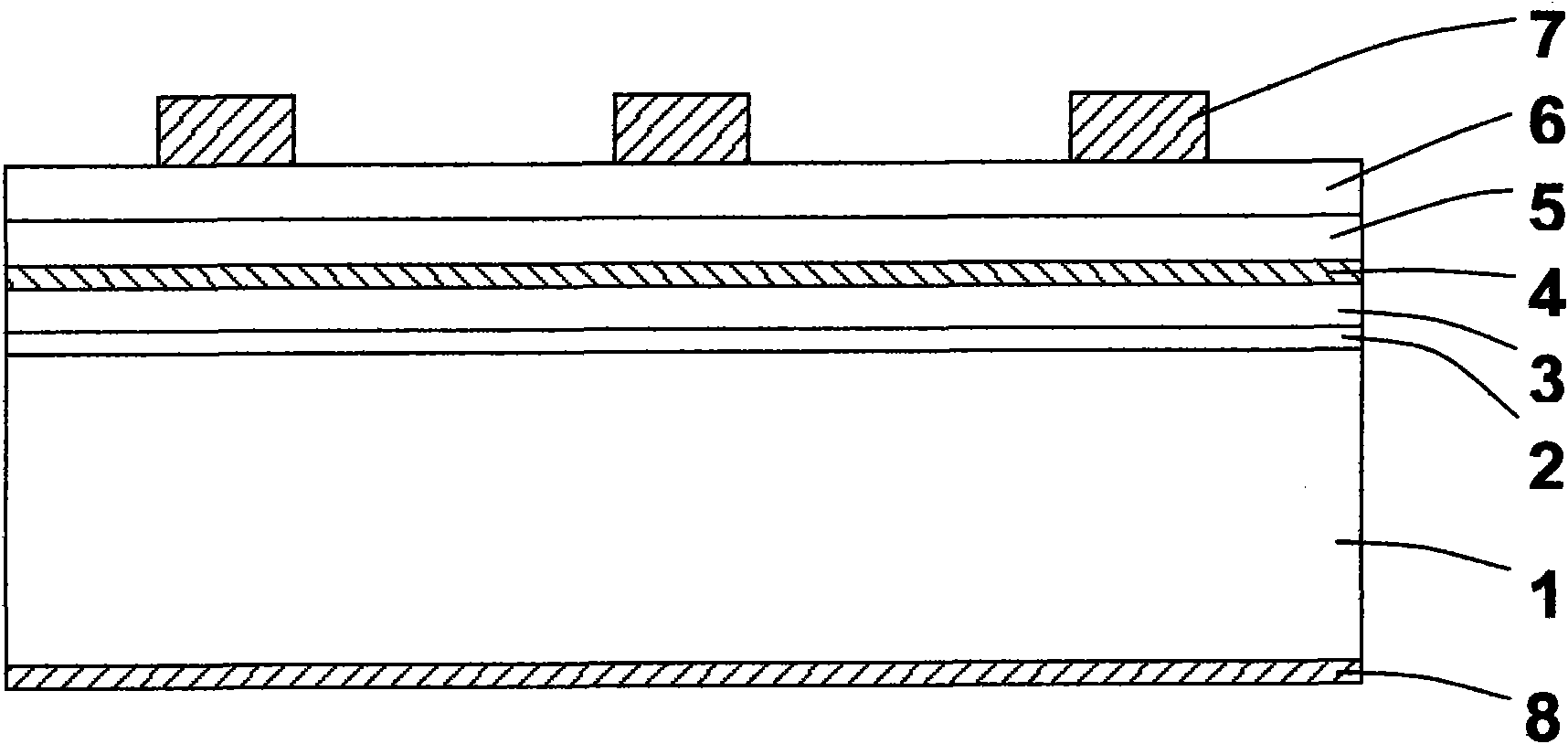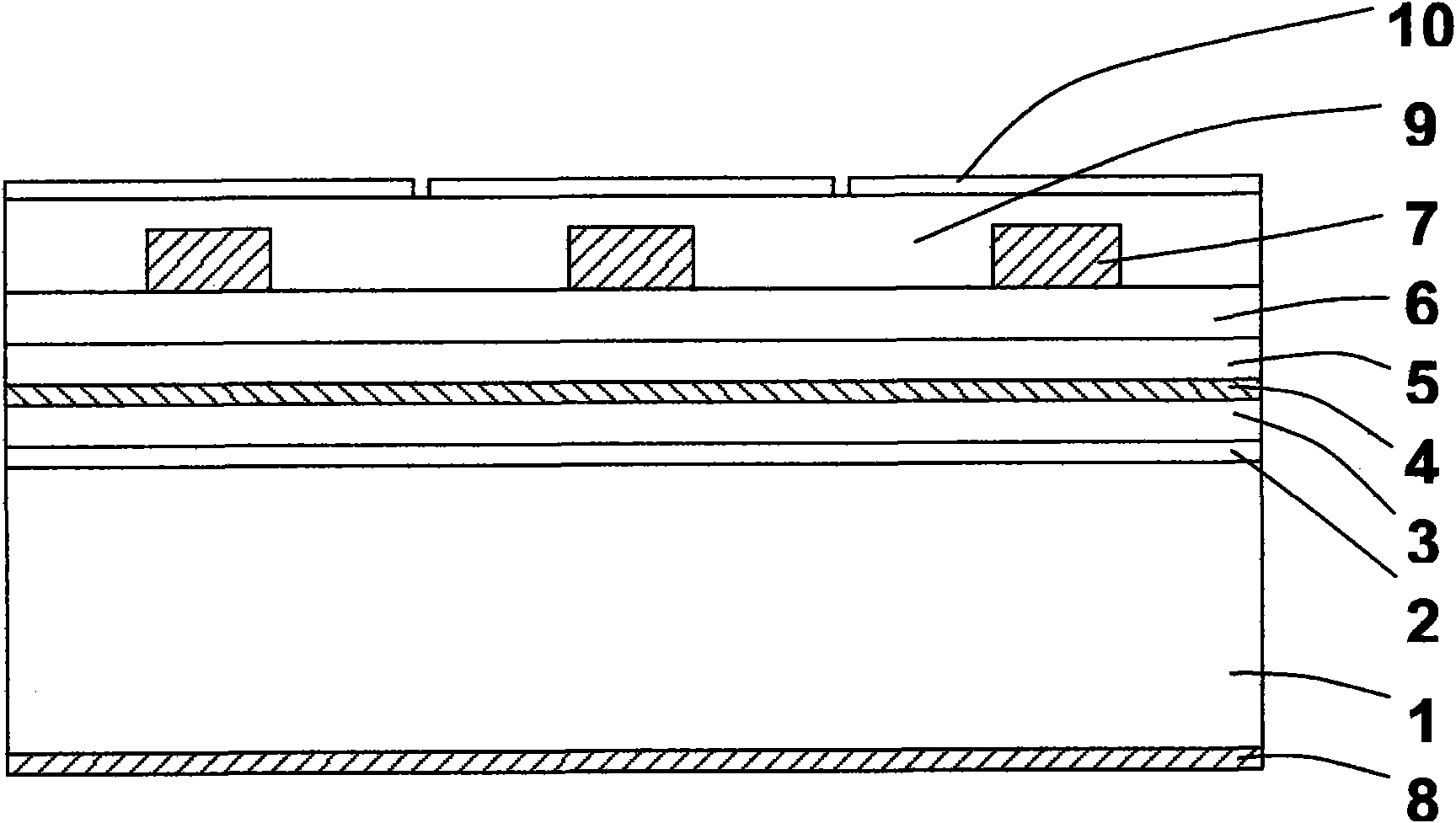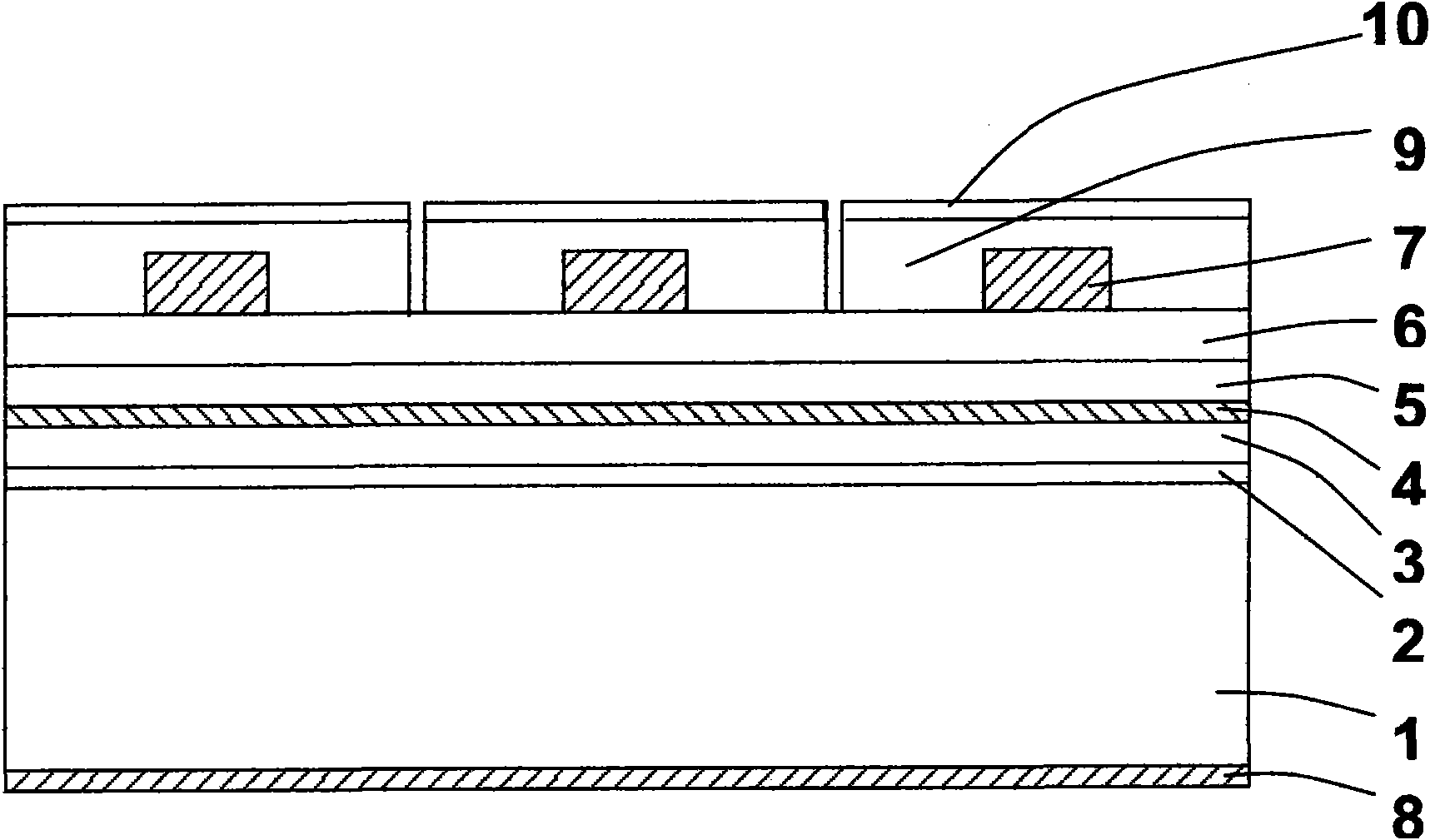Manufacturing process for improving capacity of aluminum gallium indium phosphorus light-emitting diodes
A light-emitting diode, gallium indium phosphide technology, applied in the field of quaternary light-emitting diodes, can solve the problems of reducing single-chip production, and achieve the effects of improving yield, reducing cracking, and reducing costs
- Summary
- Abstract
- Description
- Claims
- Application Information
AI Technical Summary
Problems solved by technology
Method used
Image
Examples
Embodiment Construction
[0023] The present invention will be further described below in conjunction with the accompanying drawings and embodiments.
[0024] The manufacturing process for increasing the yield of aluminum gallium indium phosphide light-emitting diodes, the process steps are as follows:
[0025] Such as figure 1 As shown, a distributed Bragg reflection layer 2, a first-type epitaxial layer 3, a light-emitting layer 4, a second-type epitaxial layer 5, and a window layer 6 are sequentially formed on a GaAs substrate 1; a P electrode 7 is formed on the window layer 6 And form an N electrode 8 on the bottom surface of the substrate 1 to form a wafer;
[0026] Such as figure 2 As shown, a protective layer is formed on the top surface of the wafer to cover the P electrode 7, and a 3 μm dicing line is formed on the top surface of the wafer by photolithography technology, and the size of the pre-cut grain is defined, wherein the top protective layer is made of SiO 2 The first protective la...
PUM
 Login to View More
Login to View More Abstract
Description
Claims
Application Information
 Login to View More
Login to View More - R&D
- Intellectual Property
- Life Sciences
- Materials
- Tech Scout
- Unparalleled Data Quality
- Higher Quality Content
- 60% Fewer Hallucinations
Browse by: Latest US Patents, China's latest patents, Technical Efficacy Thesaurus, Application Domain, Technology Topic, Popular Technical Reports.
© 2025 PatSnap. All rights reserved.Legal|Privacy policy|Modern Slavery Act Transparency Statement|Sitemap|About US| Contact US: help@patsnap.com



